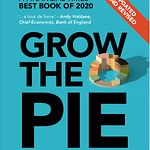Engagement is the new buzzword that seems to cover a wide range of communications activity right now… from experiential pop-up displays and employee ambassador  schemes to employee recognition programmes and incentive campaigns. But have you ever thought how it all leads back to the brand?
schemes to employee recognition programmes and incentive campaigns. But have you ever thought how it all leads back to the brand?
Strategic brand engagement is the top line plan which brings together all the elements of an organisation’s brand and its impact on employees, consumers and channel partners to create a more profitable and sustainable future. This means thinking about the brand as it impacts on consumers, distributors and employees as a single activity. So, it is not just the job for marketing (for consumers and distributors) or just for HR (for employees and agents). Brand engagement covers all markets and all potential audiences.
Because of this it needs to be consistent. But it rarely is. Marketing and HR tend not to share the detail of what they do with their corporate colleagues. This means core organisational values are not well-understood across the entire brand. Communications become fragmented and messy. Proper brand engagement initiatives look at all the possible audiences to arrive at a more effective, overall solution from the outset. Dissonance becomes consonance and harmony.
But is this approach effective?
In a Harvard Business Review during 2000, they concluded that ‘research has clearly and consistently proved the direct link between employee engagement, customer satisfaction and revenue growth’. In 2009 the Gallup Organization showed that ‘engaged employees are more profitable, more customer-focused and more loyal than those who are not engaged’.
Let’s hear what the Human Capital Institute of the USA said just last year about organisations that take engagement seriously. Director Allan Schweyer wrote:
‘A study by global services provider Towers Watson found that high-engagement firms experienced an earnings-per-share (EPS) growth rate of 28%, compared with an 11.2% decline for low-engagement firms.’ All this leads to a compelling business case to introduce some kind of brand engagement strategy to every organisation, especially large ones.
But nothing is more telling than a real, live case history.
Employee Engagement Case Study
Costco US is an easy-to-understand and clear example of how engagement can make a difference, especially in their retailer environment of wafer-thin margins and relatively unqualified staff. In the mid-2000s they were recording just 23% employee turnover v an industry average of 66% and higher per head productivity than any comparable retailer at the time. This followed a deliberate campaign of new investment in employee benefits, extensive employee skills training and a number of policies designed to instill a high degree of trust between the managers and the managed. This could be a classic definition of how to engage with employees.
Wolfgang Ghiel and Joseph LePla wrote one of the best books around in 2012 about employee brand engagement, Create a Brand that Inspires. This quote sums up their approach… and ours.
‘In order to make and keep that (the brand’s) promise an organization’s internal branding and external brand expression must be two sides of the same coin.’
John Fisher, Managing Director, FMI Group, the brand engagement specialists. John is the author of Strategic Brand Engagement which is due to be published by Kogan Page in February, 2014. For more details contact info@fmigroup.co.uk
Image courtesy of David Castillo Dominici / FreeDigitalPhotos.net




